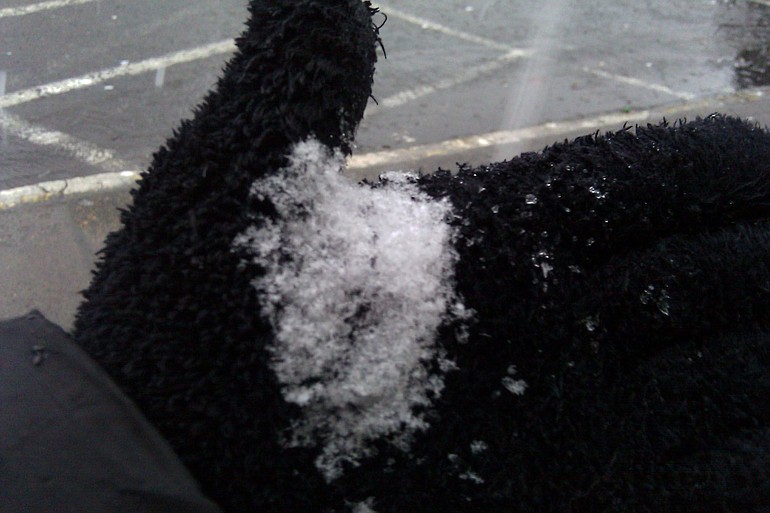County braces for more snow
This ain’t no flaky theory.
When snow comes floating down from the clouds, conditions have to be just right for the flakes to be as big as silver dollars. And those conditions were just right Wednesday morning in Vancouver.
Witnesses were amazed to see how big the snow flakes were. So what has to be in place to make that happen?
Warm snow.
“In layman’s terms, if you get snow occurring at the warm end of the temperature (spectrum), it can support a bigger snowflake,” said Tyree Wilde, warning system coordination meteorologist for the National Weather Service in Portland.
In essence, we got a slushy snow. Moisture began falling when the surface temperature was hovering right around freezing, just barely cold enough to support low-elevation snow.
“The temperature was in the low to mid-30s,” Wilde said. “It was snowing at 35 or 36 degrees, so it was kind of melting. The melt process was taking place, and the snowflake was getting bigger and bigger and bigger.”
As the flakes floated down, they took on a broader and thinner shape.
Wilde said it’s also possible that, as they softened up, smaller particles merged together as singular gloppy flakes. Wednesday’s golf ball-size snowflakes were definitely big, but not even close to the biggest ever recorded.
A really big flake
The Handy Weather Answer Book, authored in 1997 by meteorologist Walter A. Lyons, related an 1888 snowstorm in Shirenewton, England.
“Giant snowflakes, 3.75 inches across and a quarter-inch thick, fell and covered the ground to a depth of two inches in just two minutes,” Lyons wrote.
Those weren’t the biggest snowflakes, he wrote.
A year before that and closer to home, snowflakes the size of serving plates fell on Fort Keogh, Mont. Lyons wrote that residents measured some of the flakes that fell on Jan. 28, 1887, as up to 15 inches in diameter.



